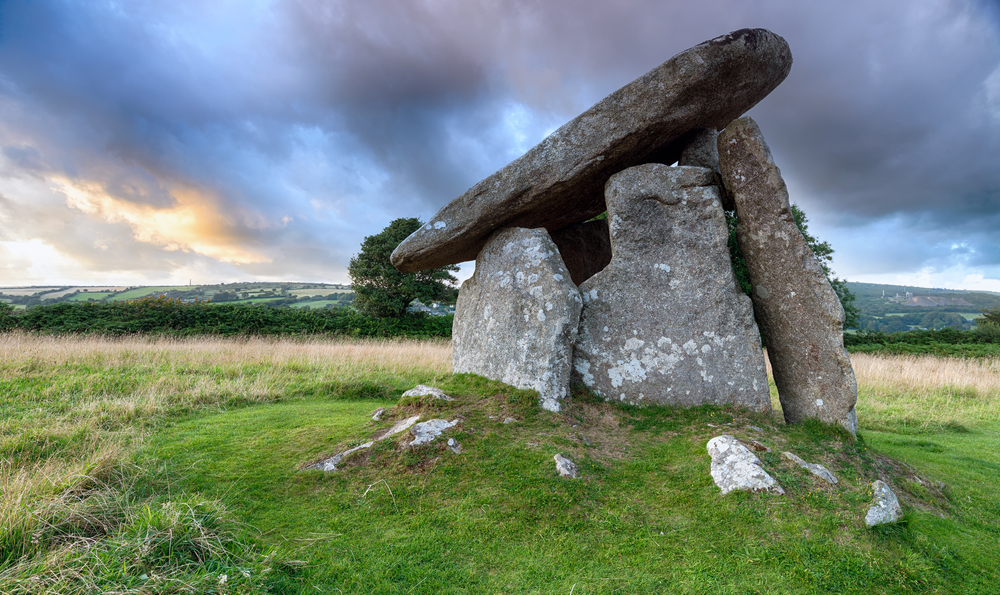Cornwall has so much history to inspire you! From pirates to mining, castles to stones circles, Cornwall really has it all. This special landscape is dotted with hundreds of prehistoric remains, many of which are overlooked by visitors. But these captivating sites offer wonderful walking opportunities and a chance to really get close to the past.
Trethevy Quoit
This truly impressive tomb towers above you in a small meadow on Bodmin Moor. Not far from the little moorland village of St Cleer this quoit, which was once known as the Giant’s House, is a spectacular example of an early Neolithic dolman or burial chamber. Five massive granite slabs support a huge capstone, note the hole in one corner that some have suggested was used to observe the heavens. A great start on your prehistoric adventure!
The Stripple Stones
This atmospheric site is roughly 3000 years old and stands high on Bodmin Moor in the shadow of Hawk’s Tor. Access to this site has only recently been granted and an amazing conservation effort by English Heritage has seen many of this circle’s stones re-erected. The Stripple Stone circle is particularly special as it is one of just three in Cornwall which stands on a raised henge. You will also find the Trippet Stone Circle less than a mile away, two for one!
Ballowall Barrow
Dramatically situated on the cliffs close to Cape Cornwall Ballowall Barrow, also known as Carn Gluze, is a unique monument. It was hidden for years beneath mining waste until William Borlase excavated it in the 19th century. Local people often reported strange happenings at the site, including mysterious lights and dancing fairies! This ancient Bronze Age tomb is made up of two intricately constructed concentric stone walls, enclosing five stone lined chambers known as cists which likely once held the cremated remains of the dead.
Men Gurta
High up on the St Breock Downs is Cornwall’s largest standing stone. At 4.9m high and weighing in at around 16.5 tons this stone is huge! The mind boggles as to how the people who put it here about 4500 years ago manoeuvred it in to position, let alone how they got it here. Men Gurta, also known as the St Breock Longstone, has a very distinctive pattern of quartz strips and has also been found to be standing on a bed of quartz pebbles. Surprisingly this stone was still being used as a community meeting place up until the mediaeval period.
Halliggye Fogou
Fogous (pronounced foogoos) are subterranean tunnels unique to Cornwall. The word Fogou in Cornish literally means ‘cave’ but what these man-made structures were constructed for remains a mystery. The Halliggye Fogou is owned by English Heritage and is easy to find on the Trelowarren Estate. Made about 2400 years ago it consists of a long narrow passageway, with other smaller tunnels leading off. It is a fascinating, if haunting, place to visit.
